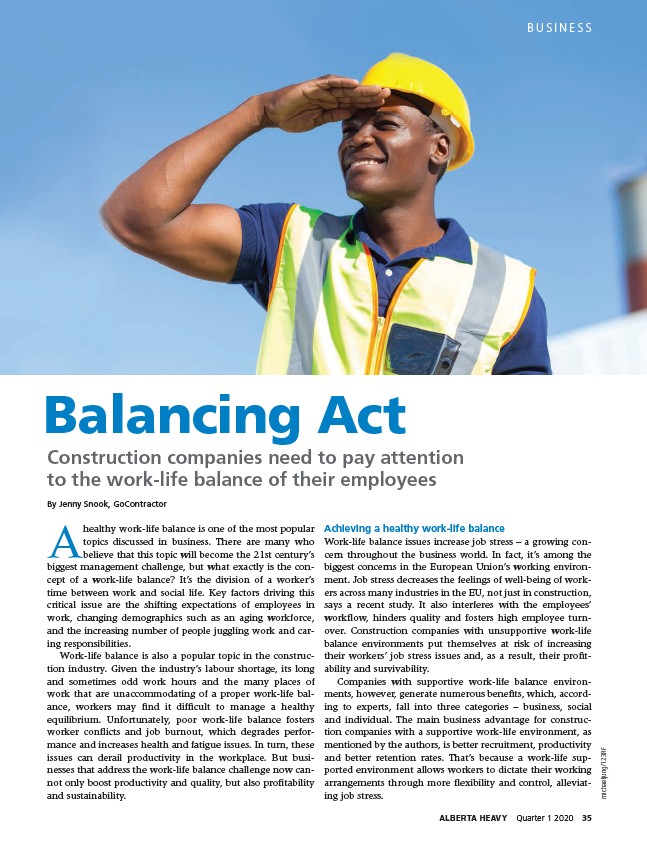
Balancing Act
Construction companies need to pay attention
to the work-life balance of their employees
By Jenny Snook, GoContractor
A healthy work-life balance is one of the most popular
topics discussed in business. There are many who
believe that this topic will become the 21st century’s
biggest management challenge, but what exactly is the con-cept
of a work-life balance? It’s the division of a worker’s
time between work and social life. Key factors driving this
critical issue are the shifting expectations of employees in
work, changing demographics such as an aging workforce,
and the increasing number of people juggling work and car-ing
responsibilities.
Work-life balance is also a popular topic in the construc-tion
industry. Given the industry’s labour shortage, its long
and sometimes odd work hours and the many places of
work that are unaccommodating of a proper work-life bal-ance,
workers may find it difficult to manage a healthy
equilibrium. Unfortunately, poor work-life balance fosters
worker conflicts and job burnout, which degrades perfor-mance
and increases health and fatigue issues. In turn, these
issues can derail productivity in the workplace. But busi-nesses
that address the work-life balance challenge now can-not
only boost productivity and quality, but also profitability
and sustainability.
Achieving a healthy work-life balance
Work-life balance issues increase job stress – a growing con-cern
throughout the business world. In fact, it’s among the
biggest concerns in the European Union’s working environ-ment.
Job stress decreases the feelings of well-being of work-ers
across many industries in the EU, not just in construction,
says a recent study. It also interferes with the employees’
workflow, hinders quality and fosters high employee turn-over.
Construction companies with unsupportive work-life
balance environments put themselves at risk of increasing
their workers’ job stress issues and, as a result, their profit-ability
and survivability.
Companies with supportive work-life balance environ-ments,
however, generate numerous benefits, which, accord-ing
to experts, fall into three categories – business, social
and individual. The main business advantage for construc-tion
companies with a supportive work-life environment, as
mentioned by the authors, is better recruitment, productivity
and better retention rates. That’s because a work-life sup-ported
environment allows workers to dictate their working
arrangements through more flexibility and control, alleviat-ing
job stress.
michaeljung/123RF
B U S I N E S S
ALBERTA HEAVY Quarter 1 2020 35